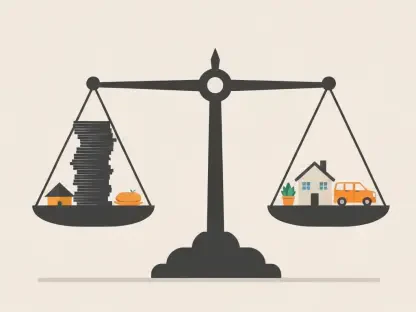In an era where cryptocurrency transactions are under increasing scrutiny from global regulators, navigating the complex landscape of tax compliance has become a daunting task for millions of digital asset users. With frameworks like the Crypto-Asset Reporting Framework (CARF) and the European Union’s DAC8 directive setting new standards, exchanges and traders alike face mounting pressure to align with international expectations. This challenge underscores the urgent need for streamlined solutions that bridge the gap between decentralized finance and traditional regulatory requirements.
The purpose of this FAQ is to address the pivotal collaboration between a leading cryptocurrency exchange and a specialized tax solution provider, shedding light on how this partnership tackles compliance hurdles. Readers will gain insights into the specific benefits for users, the implications for the broader crypto industry, and the mechanisms behind automated tax reporting. By exploring these key areas, the aim is to provide clarity on a topic that impacts traders across numerous jurisdictions.
This content delves into the intricacies of global tax regulations for digital assets, offering actionable information for users seeking to understand their obligations. Expect a breakdown of critical questions surrounding this alliance, with a focus on user experience, regulatory adherence, and industry trends. The goal is to equip readers with a comprehensive understanding of how such collaborations are shaping the future of cryptocurrency trading.
Key Questions About the Collaboration
What Is the Significance of This Partnership for Crypto Tax Compliance?
Cryptocurrency markets operate in a rapidly evolving regulatory environment, where governments and international bodies are increasingly focused on monitoring digital asset transactions. This heightened oversight has created a pressing need for exchanges to adopt robust compliance mechanisms that protect both the platform and its users. The alliance between a major cryptocurrency exchange and a leading tax solution provider emerges as a strategic response to these demands, aiming to simplify adherence to complex global standards.
The partnership focuses on integrating advanced tax reporting infrastructure to automate compliance with frameworks like CARF and DAC8. This initiative ensures that users can meet their tax obligations without the burden of manual reporting, minimizing errors and enhancing trust in the platform. By prioritizing transparency, this collaboration addresses a critical pain point for traders who often struggle with the intricacies of tax documentation in multiple jurisdictions.
Evidence of the significance lies in the scale of the exchange’s user base, spanning over 70 jurisdictions, which highlights the potential impact of streamlined compliance solutions. Such a broad reach demonstrates the necessity for scalable tools that can adapt to diverse regulatory landscapes. This alliance sets a benchmark for how crypto platforms can proactively address global tax challenges while maintaining a user-centric approach.
How Does the Automated Tax Reporting System Benefit Users?
Understanding the practical advantages of automated tax reporting is essential for cryptocurrency traders navigating regulatory requirements. Many users lack the time or expertise to compile accurate tax information, especially when operating across borders with varying rules. The introduction of an automated system through this partnership offers a seamless way to handle these responsibilities without disrupting trading activities.
The primary benefit is the elimination of manual effort, as the system generates CARF-compliant reports based on minimal user input during onboarding. This reduces the likelihood of mistakes that could lead to penalties or audits, providing peace of mind for individuals and entities alike. Traders can focus on market opportunities while the backend infrastructure manages compliance efficiently.
Additionally, this user-friendly solution fosters confidence by aligning with international standards, ensuring that data is handled securely and accurately. The emphasis on simplicity reflects a broader commitment to making cryptocurrency accessible, even as regulatory demands grow stricter. Such innovations are vital for sustaining user engagement in an industry often criticized for its complexity.
What Does This Partnership Reveal About Industry Trends?
The cryptocurrency sector is at a crossroads, balancing the ethos of decentralization with the realities of regulatory integration. As frameworks like CARF and DAC8 gain traction, exchanges are compelled to align with traditional financial expectations, marking a significant shift in how digital assets are managed. This collaboration serves as a microcosm of a larger trend toward harmonizing decentralized finance with established oversight mechanisms.
By partnering with a specialized tax solution provider, the exchange demonstrates a proactive stance on compliance, setting an example for others in the space. This move highlights the growing importance of strategic alliances that leverage expertise to navigate regulatory complexities. It also underscores the industry’s recognition that transparency is no longer optional but a cornerstone of sustainable growth.
The trend extends beyond individual platforms, pointing to a future where compliance solutions become integral to crypto operations. This shift is evident in the increasing number of exchanges seeking partnerships with firms that offer tailored tools for tax and accounting challenges. As regulations continue to evolve, such collaborations will likely become standard, reshaping the competitive landscape of digital asset trading.
How Do Leaders View This Collaboration’s Impact on the Crypto Space?
Leadership perspectives provide valuable insight into the strategic importance of this alliance within the cryptocurrency ecosystem. Compliance officers and executives from both sides have emphasized the shared goal of enhancing user safety while adapting to international tax standards. Their commentary reflects a mutual dedication to innovation, positioning this partnership as a model for others to emulate.
The exchange’s commitment to customer protection is evident in statements highlighting the seamless integration of tax reporting tools as a means to build trust. Meanwhile, the tax solution provider’s leadership has praised the proactive approach, noting that such efforts elevate the industry’s credibility on a global stage. These viewpoints converge on the idea that compliance is a competitive advantage in today’s market.
This alignment of vision suggests that the collaboration could inspire broader adoption of similar practices across the sector. By championing transparency and user-focused solutions, both entities contribute to a narrative of responsibility that counters past criticisms of cryptocurrency as an unregulated frontier. Their combined expertise signals a maturing industry ready to meet regulatory demands head-on.
Summary of Key Insights
This FAQ has explored the critical dimensions of a groundbreaking partnership aimed at enhancing global tax compliance for cryptocurrency users. Key points include the automation of CARF and DAC8-compliant reporting, the tangible benefits for traders through reduced administrative burdens, and the reflection of broader industry trends toward regulatory alignment. The collaboration stands as a testament to the power of strategic alliances in addressing complex challenges within the digital asset space.
The main takeaway is that such initiatives prioritize user experience while meeting stringent international standards, creating a blueprint for other platforms to follow. The emphasis on transparency and efficiency not only strengthens trust but also positions compliance as a core component of cryptocurrency trading. This partnership illustrates how innovation and regulation can coexist, fostering a more secure environment for millions of users worldwide.
For those seeking deeper knowledge, exploring resources on global tax frameworks like CARF and DAC8 can provide further context on the evolving regulatory landscape. Additionally, staying informed about industry developments through reputable crypto news outlets can offer updates on similar collaborations. These avenues ensure a comprehensive understanding of how compliance shapes the future of digital finance.
Final Thoughts on the Path Forward
Reflecting on this collaboration, it becomes clear that the cryptocurrency industry has reached a pivotal moment where regulatory adherence is no longer a secondary concern but a fundamental priority. The partnership between a leading exchange and a tax solution provider marks a significant step in bridging the divide between decentralized systems and traditional oversight, ensuring that users are supported in an increasingly regulated world.
Looking ahead, stakeholders are encouraged to consider adopting or advocating for similar compliance tools within their platforms or communities. Engaging with automated reporting solutions could mitigate risks and enhance operational efficiency, especially as global standards continue to tighten from 2025 onward. This proactive approach is essential for maintaining competitiveness in a rapidly maturing market.
Beyond individual action, the broader implication is a call for the industry to embrace partnerships that balance innovation with responsibility. By fostering dialogue between exchanges, solution providers, and regulators, the crypto space can evolve into a more integrated and trusted ecosystem. This collaboration lays the groundwork for such progress, inviting all participants to contribute to a future where compliance and creativity thrive in tandem.









